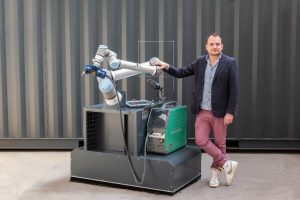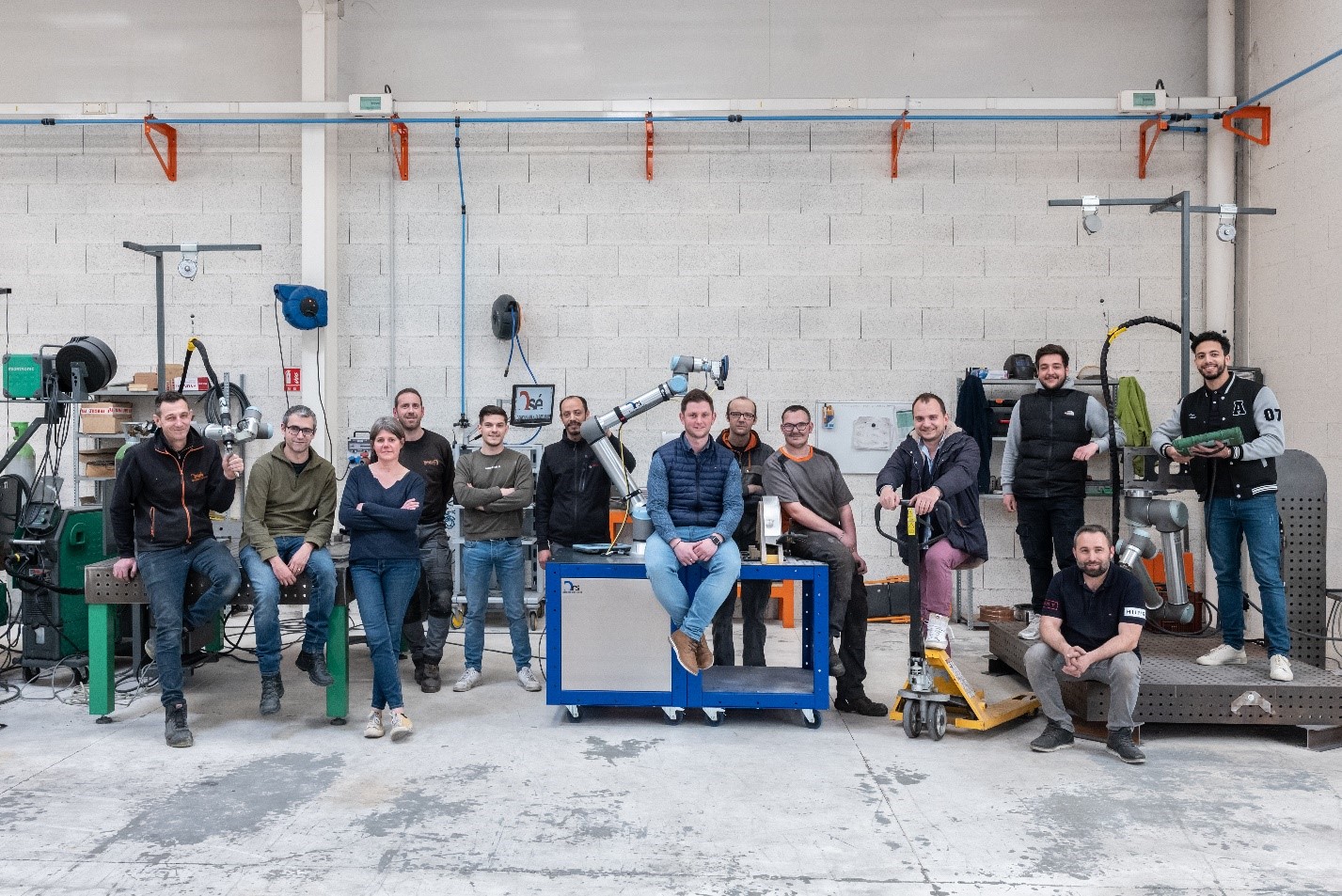[ad_1]
Industry professions are under pressure and this is particularly true when it comes to welding! In this context of labor shortage, companies have every interest in becoming more attractive if they want to maintain their growth and save their production. Exclusive recruitment of people undergoing retraining without going through the CV box, discovery of professions “blindly”, compulsory involvement in development projects… Osé (Group O) has implemented innovative practices, to succeed in attracting new profiles and thus support its 40% annual growth! Alexandre Published, founder and director of this resolutely people-oriented group, explained to us the approach he has put in place.

The Osé company (Group O) is an SME specializing in the design and manufacturing of industrial sheet metal.
Alexandre Published is the founder and director.
Osé has chosen to exclusively recruit people undergoing retraining and train them in cobotics to compensate for the shortage of welders.
A winning choice, since the company shows 40% growth per year!
Engineering techniques: We know that industrial professions are under pressure. How do you recruit your welders?
Alexandre Published: It’s been years since we stopped doing this promotion of industry professions among young people and we are paying for it today. Even if we are trying now to change the image of these professions, we know that it will take 10 years to see the first profiles arrive on the job market. Currently, every year we still see welder and industrial fitter training disappearing from vocational high schools.
What to do in this situation? He huge shortage of welders in France, 650 in the Auvergne-Rhône-Alpes region alone! Because they are in high demand, trade welders have become the divas of the industry. They change companies regularly, attracted by ever higher salaries, without becoming attached to the companies. For companies, it does not create added value in the long term and it does not help them grow.
We made a radically different choice. In group O, 90% of the 37 employees do not come from the profession. Our main recruitment lever is Pôle Emploi. We no longer want professional welders, because they are profiles that are too closed to change, afraid of cobotics and who do not want to leave their comfort zone. On the contrary, a person undergoing retraining is much more open and immediately effective on a cobot.
And how do you manage to be attractive? Is cobotics enough?
It contributes to this, but group O is also particularly active in the recruitment part. We have a partnership with Pôle Emploi and we organize “blind discoveries” of the jobs we offer twice a year. The principle is simple: people undergoing retraining are invited and come to discover the companies. They do not know in advance what the job will be and discover it with the employees. At the end, we give them time for discussion and the candidate gets their own experience of the job.
This method is effective, much more so than the traditional CV/interview process. We don’t even look at CVs, because sometimes the paths are false and very often they highlight personal difficulties which do not concern the recruiter. This is why, when people give us their CV, we cut it up to keep only the contact information part.
This atypical mode of operation comes from a personal conviction. When I was a site director, before becoming self-employed, I worked alongside managers who had little consideration for employees. However, an employee may be well paid, but if he does not listen, respect and considerate, it will never work for long.
We are therefore very attached to the human side and we want to make them want to bring their profession to life. As our profiles are not formatted, they are very open to development. For example, with us, each employee, whatever their position, works on a development project independently. One Friday every 15 days is even dedicated to these projects!

In your opinion, does cobotized welding improve the quality of welds, compared to manual welding?
This is what we see every day! Take two people, a 50 year old welder and someone who has never welded. The novice will be much more efficient in cobotized welding.
There is an unconscious reason for this: often, the experienced welder does things mechanically, instinctively. It is in a way “marked by welding”. It adapts its welding speed and height directly, depending on the noise and what it observes. When we put a cobot in his hands, he spends little time on preparing points and the welds are less precise.
Conversely, to a person who has never welded, you tell them: “adjust the inclination to this height”. The person sticks to it and immediately obtains a quality weld.
Be careful, this doesn’t mean that welders don’t have real skills! For complex applications, manual welding is necessary and requires real know-how. But these cases represent less than 10% of welding applications; for the rest, cobotics gives excellent results.
We even discovered something we hadn’t anticipated: cobotic welding makes it possible, to a certain extent, to train people in manual welding!
Why do you say that cobotic welding can train manual welding?
I have a very telling example. 6 years ago, when we received our first cobot, we hired Nicolas, a 23-year-old with a CAP in agricultural mechanics and a CAP in landscaping, so not a welder by trade at all. One day, during the summer, one of our welders had to be absent for personal reasons. The part cannot be welded with the help of the cobot, so we had no choice but to weld by hand.
I asked him to try it, to see and he did very well!
It turns out that after following the entire development of the cobot with us for two years, this employee learned, unconsciously, how to position a welding torch and adjust the various parameters, such as the intensity.
In the end, the work carried out was worth that of a manual welder with five years of experience! So much so that we subsequently put it on a manual welding station.
[ad_2]
Source link